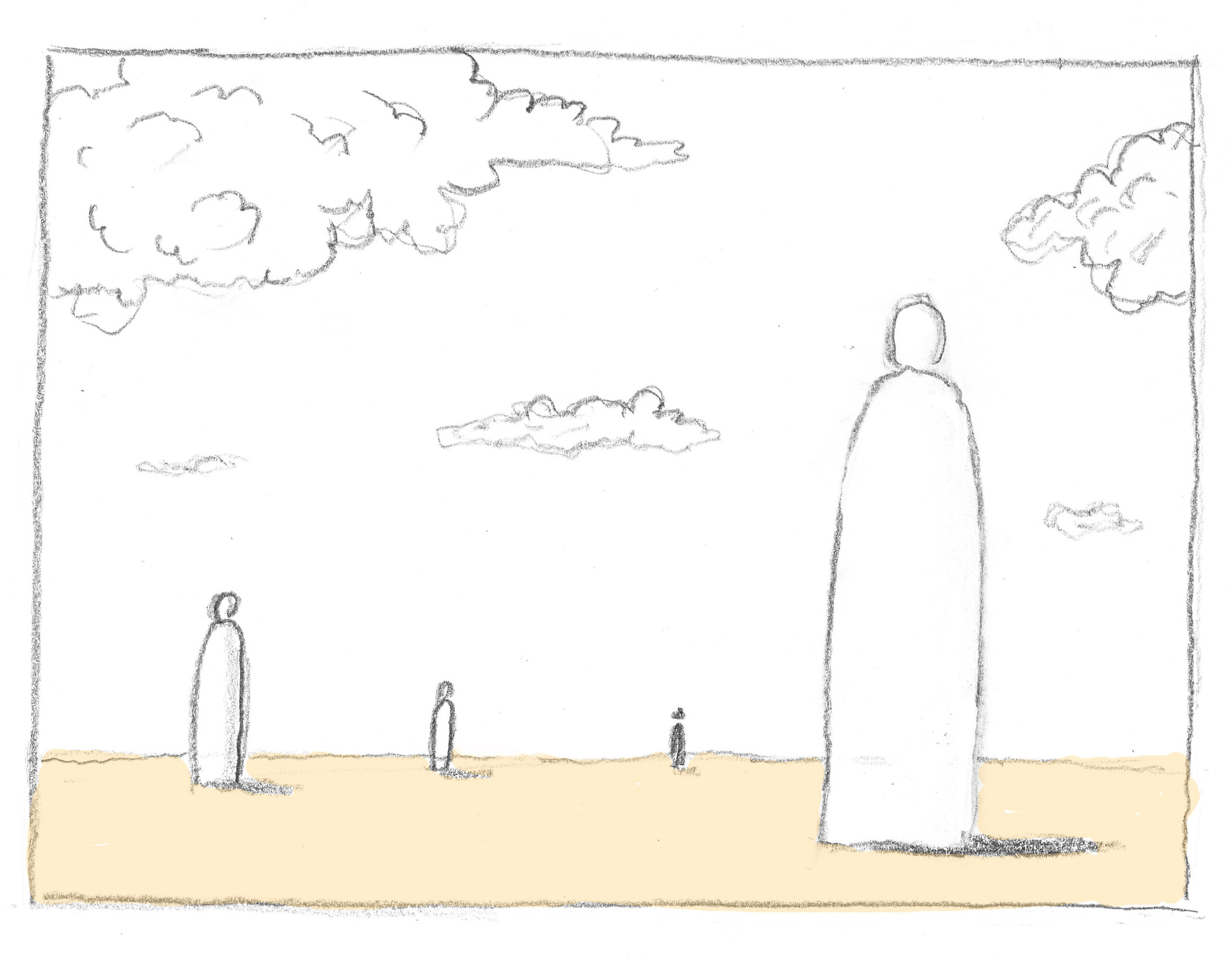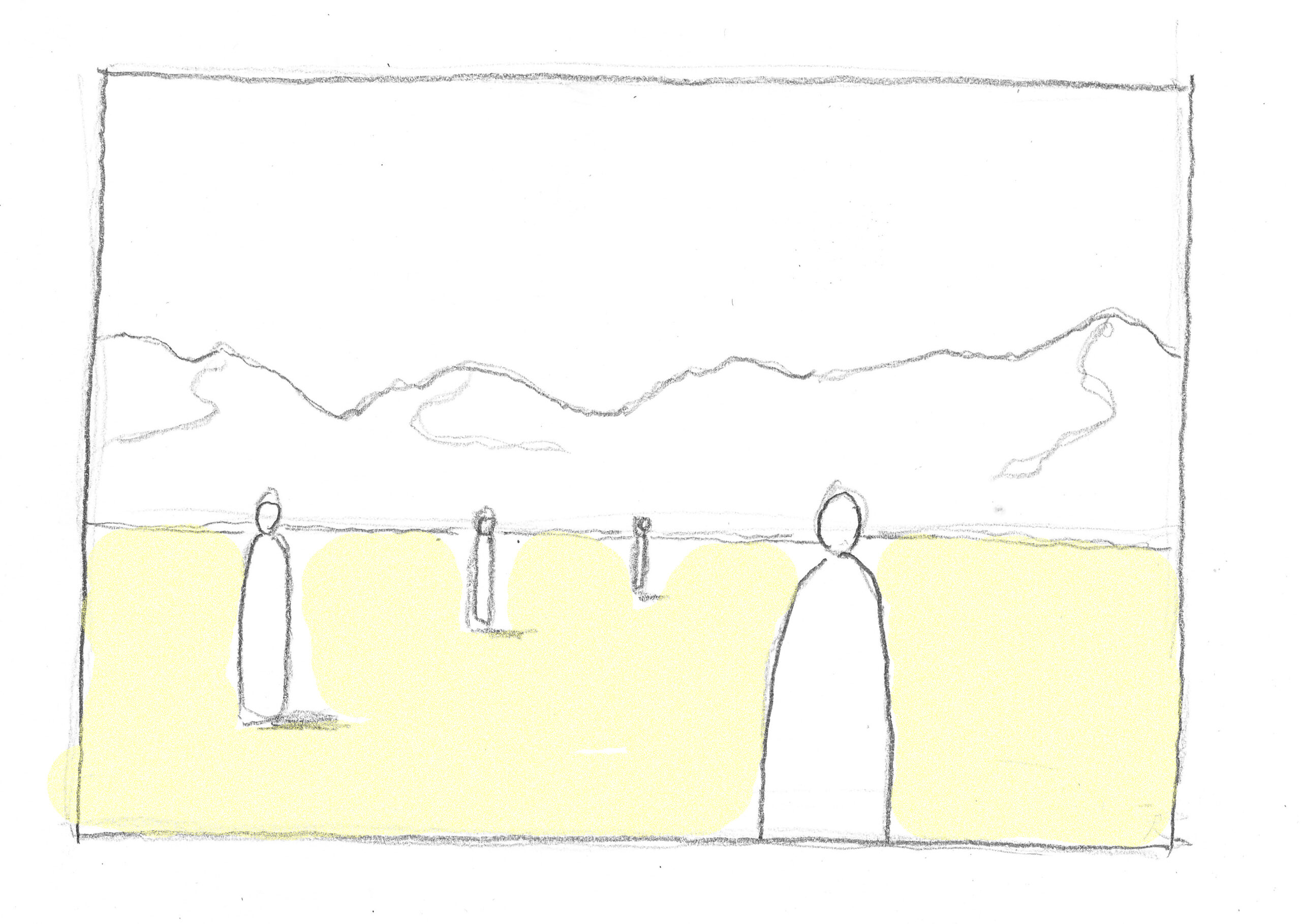Chapter 5 | ON THE BEACH
Imagine you are lying comfortably on a beach and looking at people around you. From this low position, our horizon is at the same height as the lower legs of the people. The further away, the smaller the people, but again and again with their lower legs on our horizon. In my example, I use the simplest possible sleeping bag figures from Human Figure part 1, chapter 1, level 1, with a little bit of cast shadow on the ground.
Exercise 1: try this low position with two or more figures, close by and further away. Make sure that the ratio between the part below and above the horizon is approximately the same for each figure. Some clouds that do not fit completely in the frame (cropping) create the illusion that the space continues outside the frame.

Exercise 2: this time you are standing on a dune top and looking at people walking on the beach. From this high point of view, the people are all below your horizon/eye level. The further away, the smaller and the closer they are to the horizon. Try this high point of view with two or more figures, close by and further away. In my example, the (cut off) mountain on the left in particular creates the illusion that the space continues outside the frame.

Exercise 3: You are no longer lying on the beach and you are not standing on a dune top. We watch the scene from eye-level or straight-on angle. You are walking with the others. In this case you draw people (who are in reality the same height as you) with their heads at the same height as your horizon/eye level. The further away, the smaller and the closer their feet to the horizon but their head always remains at eye level. Try this with two or more figures, close by and further away.
